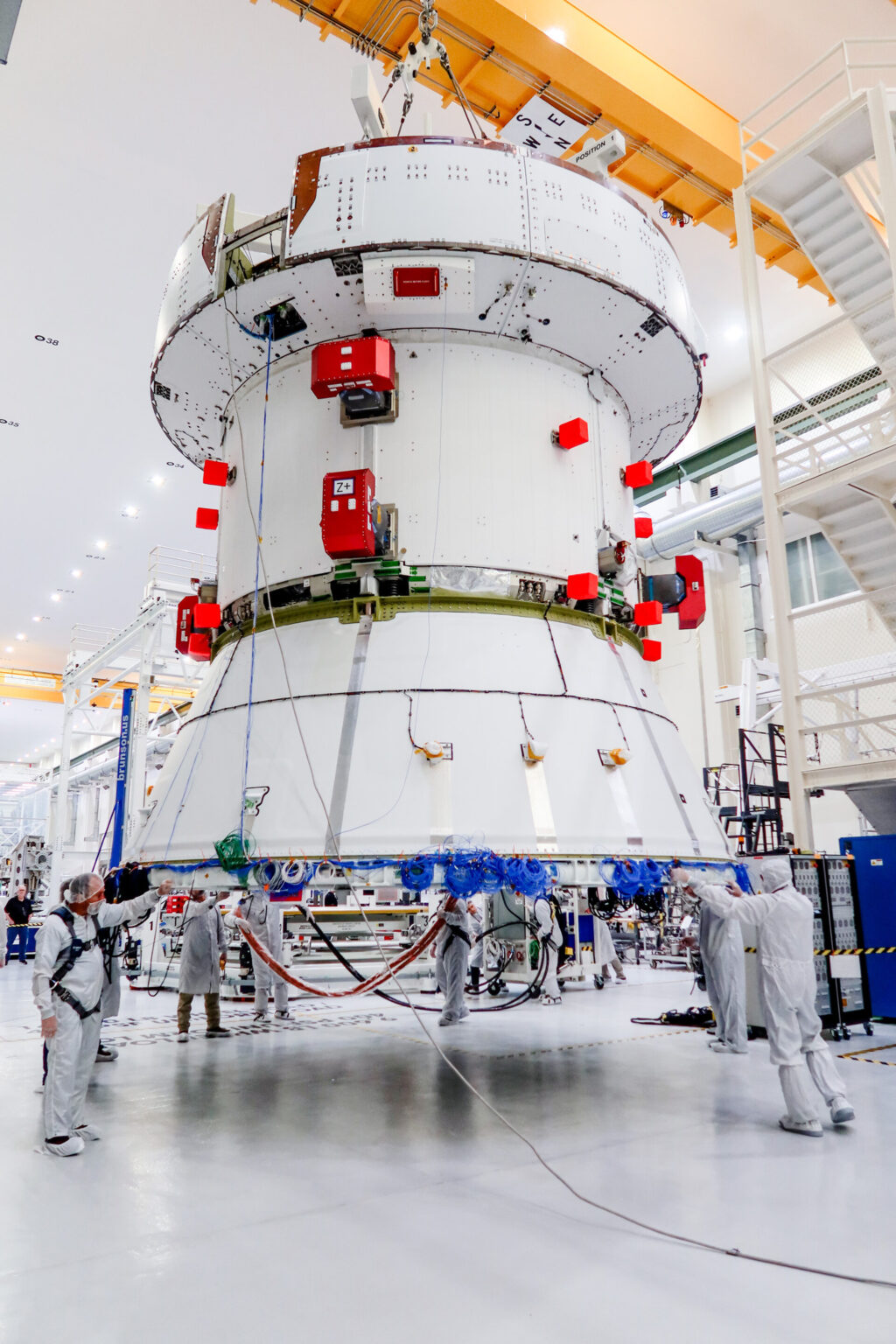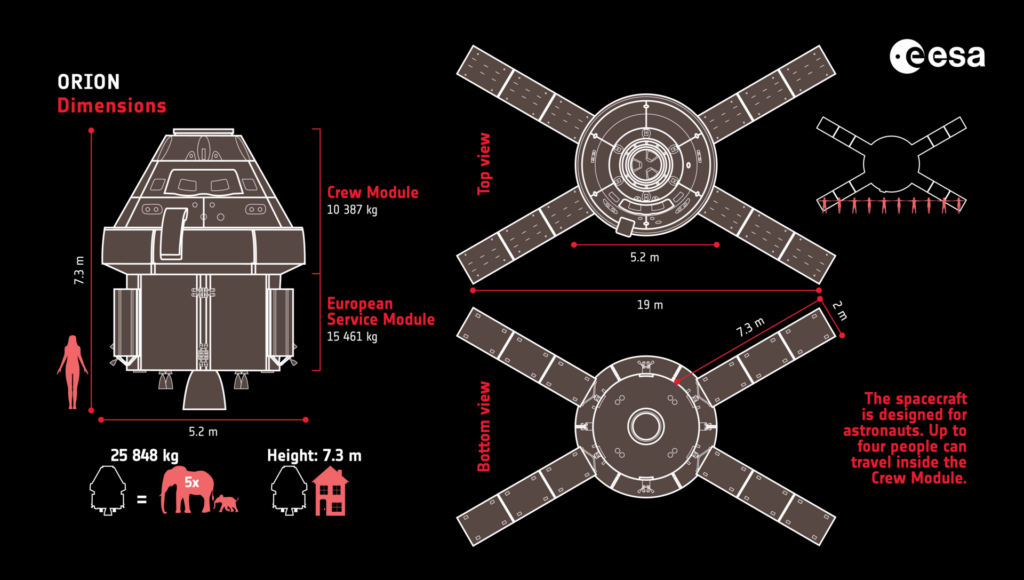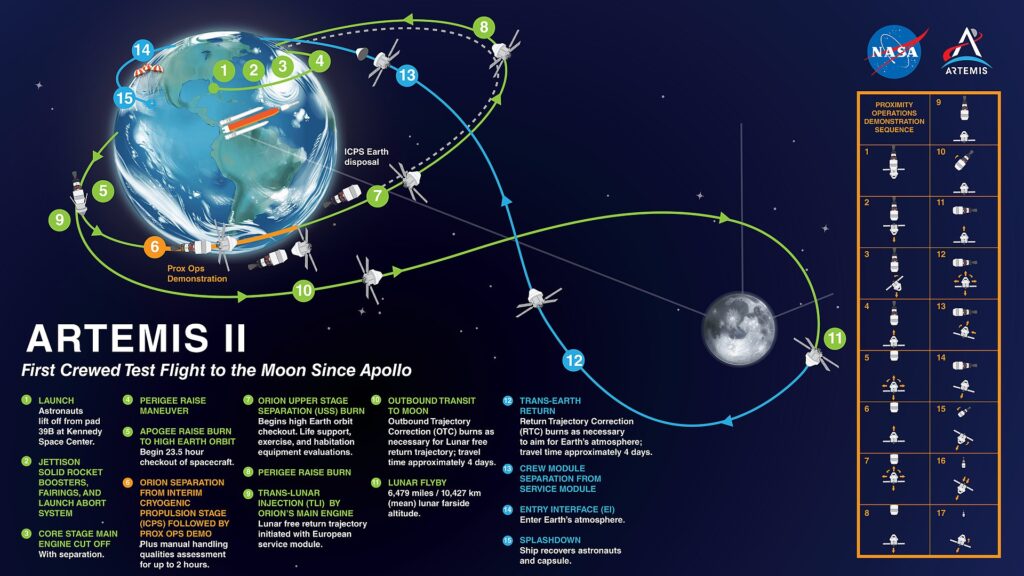ESA has officially handed over to NASA the Orion spacecraft service module, which will be involved in the Artemis II expedition. The procedure was carried out on the territory of the Kennedy Space Center. In addition to representatives of space agencies, one of the Artemis II astronauts also took part in it.
Orion Service Module Configuration
The Orion service module was created by Airbus Defense & Space on the basis of the European ATV cargo spacecraft used to supply the ISS in the period from 2008 to 2015. It carries all the necessary supply of air and water for the crew, as well as batteries and four solar panels designed to generate electricity. Its length is 4 m, diameter is 4.1 m (19 m — taking into account the deployment of solar panels), the mass in the refueled state is about 15.4 tons, of which 8.6 tons are fuel. The total length of the module wiring is 11 km.

The basis for the power plant of the spacecraft is the AJ10-190 engine, previously used in the orbital maneuvering system of American shuttles. It can provide Δv up to 1800 m/s. Also, 8 Aerojet R-4D-11 auxiliary engines and 24 small orientation system engines are installed on the module.
Artemis II Flight Plan
In the near future, the service module transferred to NASA will undergo a series of tests designed to make sure it is ready for space flight. After that, it will be connected to the Orion crew capsule.

Currently, the launch of Artemis II is scheduled for the end of 2024. Within its framework, Orion will fly around the Moon on a free return trajectory (the minimum approach distance will be 10.4 thousand km), after which it will return to Earth. This flight will be the first manned expedition since 1972, during which people will go beyond near-Earth orbit.

The Artemis II crew will consist of four people: NASA astronauts Reid Wiseman, Victor Glover and Christina Koch, as well as Canadian Space Agency astronaut Jeremy Hansen. They have already started training.
Follow us on Twitter to get the most interesting space news in time
https://twitter.com/ust_magazine
